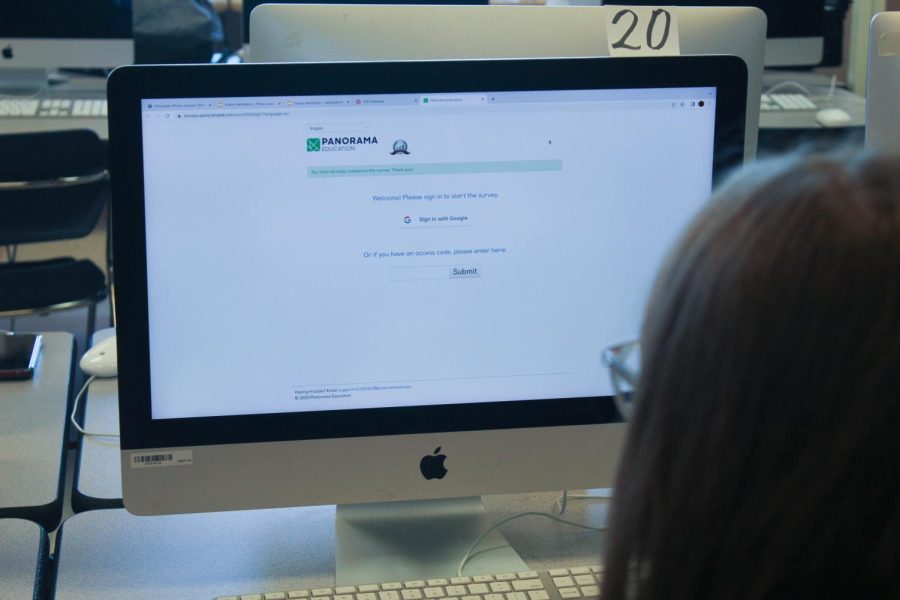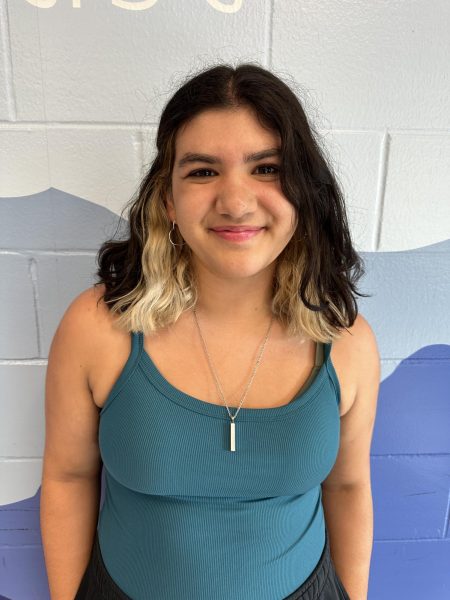Panorama Surveys Provide Information to Teachers
Grace Hartman, Junior, takes the Panorama survey.
March 23, 2023
At North on March 7, students filled out the 5Essentials survey. Many teachers individually give surveys with their own catered questions to their classes whenever they please. And throughout the rest of the year, Panorama surveys are issued in October and again in February, where over the course of an assigned week, students take an allotted five to ten minutes in their classes to provide a combination of qualitative and quantitative feedback for each of their teachers. However, there are a variety of different perspectives on using Panorama surveys in particular.
Across the nation, Panorama Education is contracted with about 23,000 public schools in 1,500 school districts. Their surveys have the same questions on them to view data and experiences at school from a small and large scale. Panorama is primarily used for students to give feedback on their teachers during each semester, allowing changes to be made in classroom settings.
“[Teachers] get to see what’s going on in their classrooms and make adjustments according to that,” said Stanley Niemiec, Assistant Principal of Instructional Programs. “So that’s kind of where it helps, [to take] that view or to take those ideas from our students and infuse them into what we’re doing at school.”
Niemiec also takes into consideration that due to the ever-changing student body, having more frequent surveys allows staff to keep up with new ideas and feedback.
“We constantly look at this school, it’s a living, breathing thing and it’s constantly changing,” said Niemiec. “So the idea of being able to take a pulse of the school and see what’s going on through another lens, through a survey just instead of a focus group of students, this is where every student has a voice.”
On the other hand when a student takes a Panorama survey or when a teacher reads the responses, there are many factors at play that could change the outcomes.
“How someone feels on one day doesn’t mean that they’re going to necessarily feel that way two weeks later,” said Lori Keough, Social Studies teacher. “Depending on what’s going on in a teacher’s life when they read what the results are, they can take it differently and depending on what’s going on in students lives, when they take the surveys, might impact what they put in those surveys.”
Many teachers do read student surveys such as those from Panorama and take the results into account when teaching or interacting with their students. Keough reflects on constructive criticism she has gotten in a survey before.
“So one year, someone just said ‘she’s sarcastic’ and it just made me think, ‘oh, well if someone is taking in what I’m saying in a different way than I’m meaning it, then I need to change how I’m saying things,’” said Keough.
Niemiec also said that Panorama would make him think about ways to improve his teaching style when he worked as a teacher.
“As a teacher, when I would give a Panorama survey to my students about engagement, [my prior belief] was, ‘I’m killing it. I’m the greatest right?’” said Niemiec. “But then as soon as they pour back to me that ‘we don’t feel that great in your classroom. We’re uneasy here or there,’ just based off of the questions on those surveys. And so that helps me take time to reflect and look at what do I do. How can I tinker with my practice to make sure that I’m doing the best for the students?”
In order for student surveys to be useful overall, however, students and staff alike need to be open minded and remember their importance.
“There’s two things you need to have,” said Keough. “Willing people to hear the data and then you also need to have willing people to take the survey seriously.”




